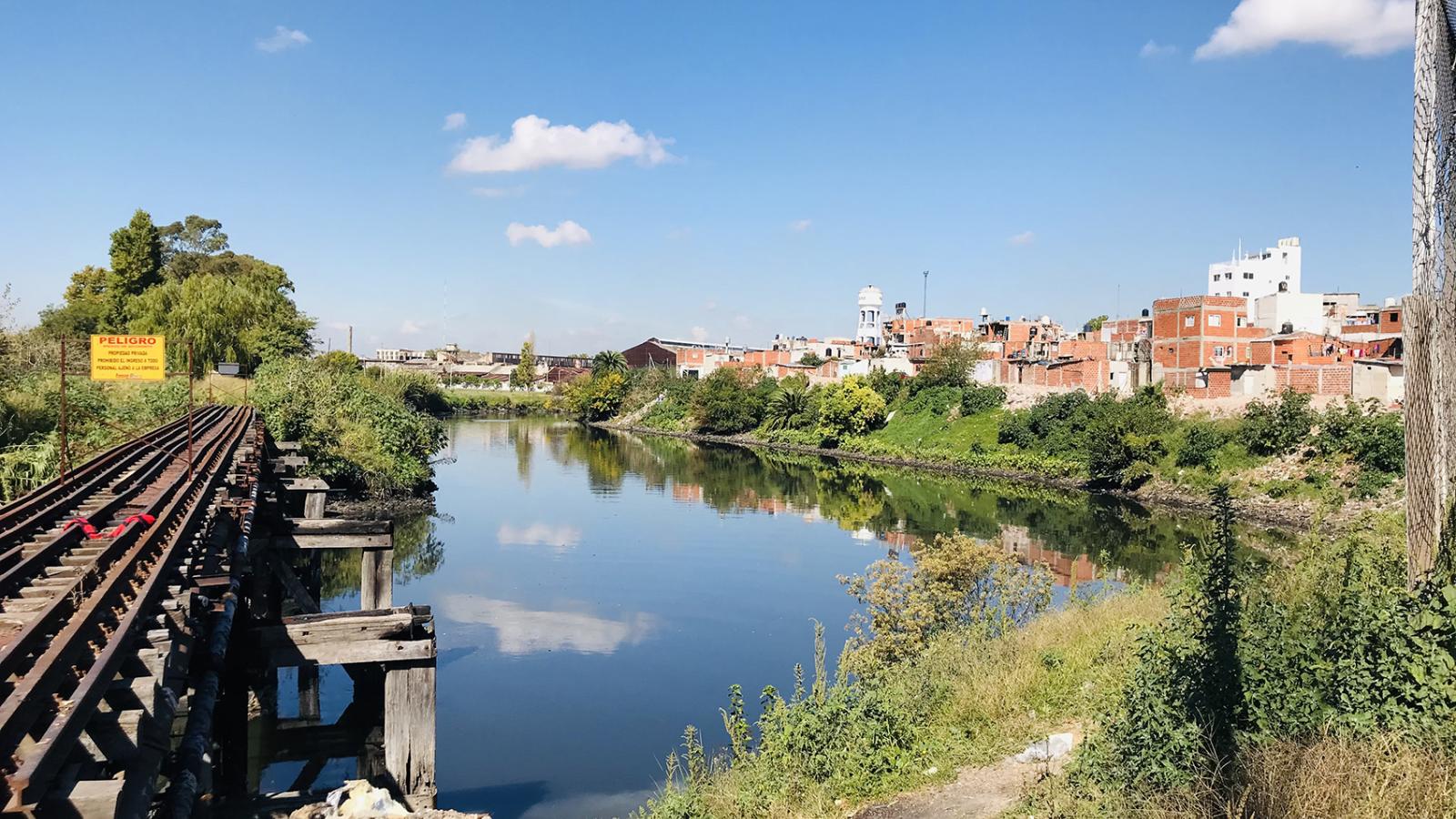Social equity and care for the Earth: what can be learned from Latin America?
Drawing on case studies from Latin America, a new special issue of Oxford Development Studies seeks to better understand the relationships between inequality and environmental sustainability.

Matazana-Riachuelo river basin in Buenos Aires.
Social inequality appears to be spiraling beyond control, as one of the world’s wealthiest individuals now wields authority over the US government’s budget. Much has been written about the impact of wealthy elites on carbon emissions and the climate crisis, such as the Oxfam report Carbon Inequality Kills or the World Inequality Report of the World Inequality Lab. But not much is known about what can counteract the negative impacts of inequality.
Drawing on case studies from Latin America, a recently published special issue of Oxford Development Studies seeks to better understand the relationships between inequality and environmental sustainability. Its contributions highlight the power of place-based and diverse coalitions of stakeholders coming together. The creative initiatives they undertake are essential to keep the corrosive impacts of inequality at bay.
All contributors to Social Equity and Care for the Earth: Tensions and Synergies in Latin America were motivated by one question. What are the conditions under which concerns for social equity and care for the earth can be addressed jointly? The findings from places as varied as the Matanza-Riachuelo river in Buenos Aires, Latin America’s most polluted river, or Selva Lacandona in Chiapas, Mexico’s largest high-canopy rainforest remnant, all lead to the same conclusion: the objectives of social equity and care for the earth are in synergy when they are mobilized jointly by place-based and diverse coalitions – including landowners, civil society, government officials, Indigenous peoples and lay citizens – and when concern for outcomes go hand in hand with concern for processes. In other words, the lives of people and planet are being cared for because of citizen actions, and because they view the process of caring as important as what may come out of it.
Social equity and care for the Earth
Water or forests are a central point of focus of all papers: the Matanza-Riachuelo river basin in Buenos Aires (Mitchell & Rabassa), the Lempa river basin at the Salvadoran-Honduran-Guatemalan border (Montoya), water aquifers in Central and Southern Chile (Schiappacasse et al.), the rainforest in Chiapas, Mexico (Izquierdo et al.), and the Amazon forest at the Peruvian-Colombian- Ecuadoran border (Delgado).
The earth, its ecosystems and all its natural materials, are humans’ life support. Environmental degradation therefore inevitably leads to degradation in human lives. As all the contributions show, the mobilization of social actors to care for the earth, protect and restore it, is deeply entangled with their mobilisation for social equity. Each contribution defines social equity in its place-based context, within the wider horizon of human rights. In Argentina, mobilizing to clean up a river is linked to concern for the health of residents living nearby. In El Salvador, ensuring shared governance of transboundary watersheds is connected to concerns for the wellbeing of the river and of humans. In Chile, mobilising to protect hydraulic systems is linked to a concern for the life of humans and of other species.
A new politics of contention
All contributions address a new way of looking at the politics of contention. It is no longer humans alone who are the subject of politics. Non-humans enter the politics of contention too, whether aquatic life or forest biodiversity. How to manage the human/non-human relationship is central to each contribution. Each study analyses how the mobilisation of political or economic elites and of place-based communities plays out to manage that interaction. It is the participation of communities who live in direct interaction with the ecosystems under threat, at times with the support of distant others, that break the vicious cycle of inequality and environmental degradation. They do so in a varity of ways according to the types of degradation of human lives and of ecosystems they experience, and through the networks and resources they can access, or even at times, create.
Mitchell & Rabassa’s contribution analyses this new politics through an environmental remediation and resettlement programme in the Matanza-Riachuelo basin. They conclude that key conditions for social equity and care for the earth to be addressed jointly were the recognition of the value of maintaining community affiliation and the active participation of the people most affected by water and air contamination. These processes were bolstered by a combination of external legal assistance and an engaged civil society sector, and were contingent upon local government support.
Montoya draws on ethnographic research to bring light to an important aspect of this new politics: multispecies justice and the emergence of non-humans as potential subjects. Addressing social equity in the Lempa river basin demands international cooperation over its transboundary territory to address the limitations of national sovereignty. Yet it also requires highlighting the interdependence between humans/nonhumans as critical to the reproduction of life in the basin. Her contribution draws out the creation of a citizen proposal for how the shared and integral governance of the basin could be pursued.
At the transborder of the Putumayo-Içá river basin in the Amazon, which marks state boundaries between Ecuador, Peru, and Colombia, is another citizen initiative which comes under scrutiny. Delgado analyses a grassroots collective planning instrument drafted by Indigenous communities themselves. She shows how the objectives of care for the earth and social equity go in synergy when there is local democratic representation beyond the tensions that borders represent. In this case, the actions of place-based communities are facilitated by a mixture of access to government resources and NGOs.
This new politics of contention of managing human/non-human relations relies on distant social actors too. Schiappacasse et al. examine two polar cases of conflict over extractive uses of water sources in Chile, avocado production in Petroca and dam building in Patagonia. They show that the negative influence of inequality on care for the earth is best counteracted with broad-based coalitions and mobilising frames that bridge the local-international. International businesses, when coupled with international NGOs, can become allies of place-based communities.
Izquierdo et al. situate this managing of human/non-human relations in historical perspective in the Mexican tropical forest of Selva Lacandona. By analysing discourses about development and conservation in the region, their research shows that contrasting visions on how humans and ecosystems should co-evolve play a large role in policy change. The participation and coordination between all sectors, private, public and civil society, is essential. But they conclude that what is fundamentally needed is for all actors to value ecosystems beyond their services to humans.
Place-based and diverse coalitions charting a new course
The UNDP 2022 Human Development Report defined development in the following terms:
‘Development is perhaps better seen as a process characterised both by adapting to an unfolding unknown reality and by purposefully transforming economies and societies to ease planetary pressures and advance inclusion. […] In a sense, all countries are developing countries, charting a new planetary course together’ (p. 15).
All contributions in this special issue offer a glimpse on how this charting is happening at the micro-territorial level. All show the transformative power of place-based and diverse coalitions in charting new ways of managing human/non-human relations, and advancing social inclusion and easing planetary pressures at the same time. The current macro geo-political situation may not be pointing in that direction just yet, but myriads of emerging initiatives rooted in territories and historical processes can shift course.

